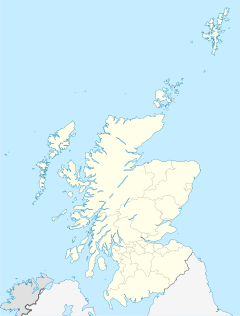Joppa, Edinburgh facts for kids
Quick facts for kids Joppa |
|
|---|---|
 Portobello and Joppa Parish Church |
|
| OS grid reference | NT319732 |
| Council area |
|
| Lieutenancy area |
|
| Country | Scotland |
| Sovereign state | United Kingdom |
| Post town | EDINBURGH |
| Postcode district | EH15 |
| Dialling code | 0131 |
| Ambulance | Scottish |
| EU Parliament | Scotland |
| UK Parliament |
|
| Scottish Parliament |
|
Joppa is a neighborhood located in the eastern part of Edinburgh, the capital city of Scotland. It sits right by the coast of the Firth of Forth, which is a large bay. To its west is Portobello, and to its east is Musselburgh in East Lothian.
The name "Joppa" comes from the Bible. It refers to the ancient port city of Jaffa in Israel. This part of Edinburgh was given the name in the 1700s because, just like Jaffa, it is located right next to the sea. Today, Joppa is mostly a place where people live.
Contents
Joppa's Past: Salt and Industry
Long ago, Joppa was known for making salt. This was done by evaporating seawater at a place called Joppa Pans. The water was left in shallow pools, and the sun would dry it up, leaving the salt behind.
Most of the old industrial buildings are gone now. However, two buildings remain: Rockville, which was likely the owner's house, and Rock Cottage. Some smaller factories have also operated near the old railway station and at Eastfield. Many of the bigger houses near the beach were built in the early 1800s. More homes were added further inland in the mid-1900s.
Getting Around: Trams and Transport
In the past, Edinburgh had special streetcars called cable cars. One of these lines went all the way to Joppa. There, it connected with an electric tram line that ran to Musselburgh.
In 1923, Edinburgh's cable car system was changed to use electricity. After this, the two lines joined up. This meant you could travel directly by tram from Levenhall in Musselburgh to Waterloo Place in Edinburgh.
Local Landmark: Portobello and Joppa Parish Church
A tall spire, about 165 feet high, stands out in Joppa's skyline. This belongs to the Portobello and Joppa Parish Church. It used to be called St Philip's Church. The church is located on the corner of Brunstane Road North.
The church was built from a type of stone called Binny Stone. It was designed by John Honeyman and finished in 1877. Sadly, a fire on December 2, 1998, badly damaged the roof and much of the inside. But the church has since been fully repaired and looks beautiful again.
Joppa During World War II
Joppa played a small part in the early days of World War II. On October 16, 1939, German planes from the Luftwaffe flew up the Firth of Forth. Their goal was to bomb British warships at Rosyth.
This event was the first daylight air raid to happen in the United Kingdom. During the attack, some houses in Morton Street and Brunstane Road North in Joppa were damaged. German pilots who were shot down during this raid were buried in Portobello Cemetery. This cemetery is on Milton Road East. They were the first enemy soldiers from World War II to be buried in Britain.
Fun Things to See: Joppa's Attractions
Today, Joppa offers some interesting places to visit. The Joppa Rocks are popular for their unique geology, which is the study of rocks and how the Earth is made. You can also enjoy the beautiful Portobello Beach right on the seafront.
In 1789, a person named Christopher Girtanner was known to have a "salt manufactory" at Joppa Pans. This shows how important salt production was to the area long ago.


